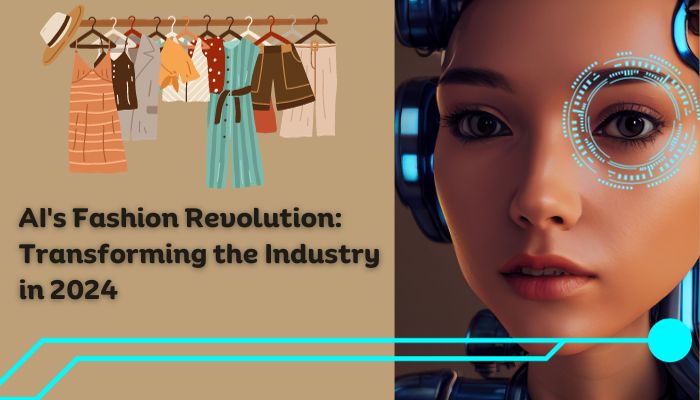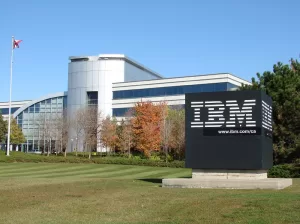The Impact of Artificial Intelligence on the Fashion Industry in 2024

Highlights
- AI reduces fashion waste, water usage, and carbon emissions; Stella McCartney partners with Google Cloud for supply chain transparency using machine learning.
- AI introduces virtual try-ons for online shopping; Burberry’s AR tools enhance the virtual experience; Google Shopping diversifies virtual try-ons, addressing sizing issues.
- Machine learning predicts trends; Tommy Hilfiger’s ‘Reimagine Retail’ project streamlines design with AI; Calvin Wong’s AiDA system generates blueprints, preserving creativity.
- AI tools analyze datasets for precise trend identification; Trendalytics leverages AI for insights from social media and Google.
- Generative AI, like DALL-E, merges with fashion photography; Vogue Italia’s May issue showcases a unique collaboration between human and AI creativity.
Welcome to the era where Artificial Intelligence (AI) is not just a technological advancement but a transformative force shaping the very fabric of the fashion industry. Since its breakthrough in 2023, AI has become the catalyst for a revolution, redefining how fashion is produced, marketed, and consumed. In the BoF-McKinsey State of Fashion 2024 Survey, an overwhelming 73% of fashion executives highlighted generative AI as a top priority for the year, indicating the industry’s keen embrace of this groundbreaking technology.
In this exploration, we delve into the profound ways AI is reshaping the fashion landscape in 2024. From sustainability initiatives and augmented reality revolutions to creative drives fueled by machine learning, trend forecasting precision, and the fusion of AI with fashion photography – each facet unfolds as a testament to AI’s pivotal role in the industry’s evolution.
As AI continues to propel the fashion industry towards sustainability, improved customer experiences, and unprecedented innovation, its enduring impact is set to shape the future of fashion in ways we have yet to fully grasp.
Here, we explore five innovative ways AI is currently transforming the fashion industry and its projected impact in 2024
1. Sustainability Boost
- AI aids fashion retailers in reducing waste, water usage, pollution, and carbon emissions.
- Stella McCartney’s collaboration with Google Cloud uses machine learning for supply chain transparency.
2. Augmented Reality Revolution
- AI introduces virtual try-on tech for online shopping.
- Burberry’s AR-based tools enhance the virtual product experience.
- Google Shopping increases diverse models for virtual try-ons, minimizing sizing issues.
3. Creative Drive with AI
- Machine learning predicts trends and understands customer preferences.
- Tommy Hilfiger’s ‘Reimagine Retail’ project streamlines design using AI insights.
- Calvin Wong’s AiDA system in Hong Kong generates blueprints, preserving creativity.
4. Trend Forecasting Precision
- AI tools analyze datasets for quick and precise trend identification.
- Trendalytics leverages AI to extract insights from social media and Google for retailers.
5. Blended Photoshoots
- Generative AI, like DALL-E, merges with fashion photography.
- Vogue Italia’s May issue showcases collaboration between human and AI creativity.
1. Sustainability Boost
The fashion sector plays a substantial role in emitting greenhouse gases and contributing to environmental pollution. According to the World Economic Forum, 75% of Generation Z consumers prioritize sustainability in their fashion choices. The integration of AI holds immense potential to expedite advancements in assisting fashion brands in minimizing avoidable waste, curtailing water consumption in manufacturing, mitigating pollution, and reducing carbon emissions. Notably, collaborations such as Stella McCartney’s partnership with Google Cloud showcase initiatives leveraging machine learning and cloud-based data processing. These efforts aim to bolster supply chain transparency and facilitate more conscientious sourcing decisions for a sustainable and responsible fashion industry.
2. Augmented Reality Revolution
E-commerce fashion retailers face a major hurdle with customers unable to try on clothes before buying. A 2023 survey by Google and Ipsos revealed that 42% of US online shoppers feel excluded due to the lack of diversity in model images, while 59% experience disappointment when purchased items don’t meet expectations. AI has revolutionized the online shopping experience by introducing virtual try-on technology, addressing issues with virtual sizing and fit. Burberry, for instance, has implemented an augmented reality (AR)-based shopping tool, enabling customers to virtually explore Burberry products in their own spaces, elevating their online research and shopping journey. Furthermore, Google Shopping is actively working to alleviate sizing concerns by increasing the availability of diverse models for virtual try-ons.

Burberry’s Augmented Reality Search Tool Source: Burberry PLC | AI’s Fashion Revolution: Transforming the Industry in 2024
3. Creative Drive with AI
Fashion brands are increasingly embracing machine learning technologies to identify trends and forecast customer preferences for upcoming seasons. By systematically collecting and analyzing data from numerous images, these technologies offer invaluable insights that surpass what a designer could manually uncover. Tommy Hilfiger’s ‘Reimagine Retail’ project exemplifies how AI can revolutionize fashion by identifying trends and streamlining the design process. Through AI-based tools, FIT students utilized an archive of Tommy Hilfiger images to create a range of designs entirely generated by AI.
Additionally, in Hong Kong, Calvin Wong introduced AiDA, a designer-centric AI system. AiDA has the capability to generate blueprints from initial sketches and colour ideas, empowering designers to preserve their creativity while receiving constructive suggestions for improvement. This innovative system took centre stage at the “Fashion X AI” event, contributing to the creation of over 80 outfits that showcased unique silhouettes and design elements. This intersection of artificial intelligence and fashion is reshaping the creative process and driving new possibilities in the industry.
4. Trend Forecasting Precision
Historically, fashion forecasters depended on qualitative methods like observing runway shows, street fashion, and pop culture for trend predictions. In today’s landscape, AI tools revolutionize this process by analyzing extensive datasets encompassing runway images, search and sales data, and social media posts. This not only expedites but enhances the precision of trend identification. A prime example is Trendalytics, a New York-based company utilizing AI to extract insights from social media and Google. Their expertise aids retailers in assessing the popularity and life cycle stages of fashion trends, empowering them to optimize sales strategies effectively.
5. Blended Photoshoots
For centuries, photography has been an integral aspect of the fashion industry. However, the emergence of generative AI has led to a fascinating convergence of these two realms, introducing innovative ways of communicating and expressing art. Tools like DALL-E are empowering photographers to transcend traditional boundaries and redefine the concept of fashion photography. A standout example is seen in Vogue Italia’s May issue, featuring a groundbreaking collaboration between human and machine creativity. Supermodel Bella Hadid, stylist Imruh Asha, photographer Carlijn Jacobs, AI artist Chad Nelson, and DALL-E joined forces, resulting in a unique fusion of talent and technology.
Artificial Intelligence is propelling the fashion industry forward by fostering sustainability, enhancing customer experiences, and fueling innovation and creativity. With its potential to revolutionize the industry, AI holds the promise of a far-reaching and enduring impact.
As we step into 2024, AI stands as a driving force, propelling the fashion industry towards sustainability, improved customer experiences, and unparalleled innovation and creativity. The impact of AI on fashion is poised to be both far-reaching and enduring.














